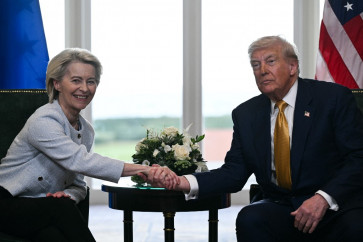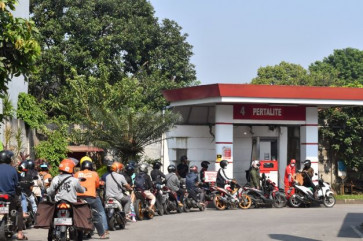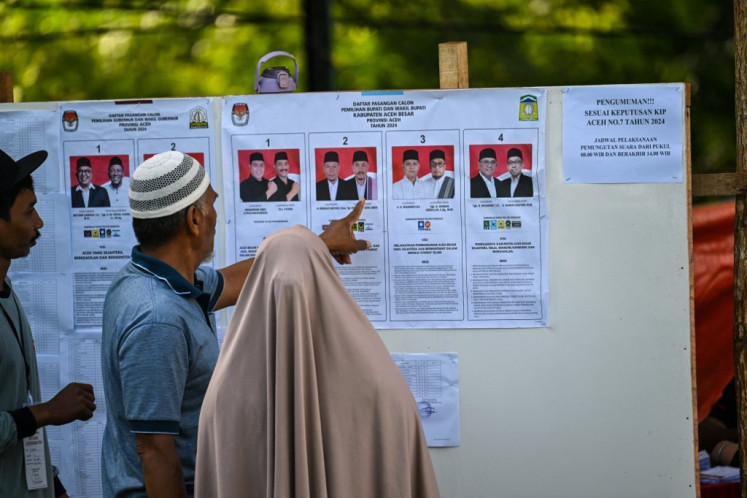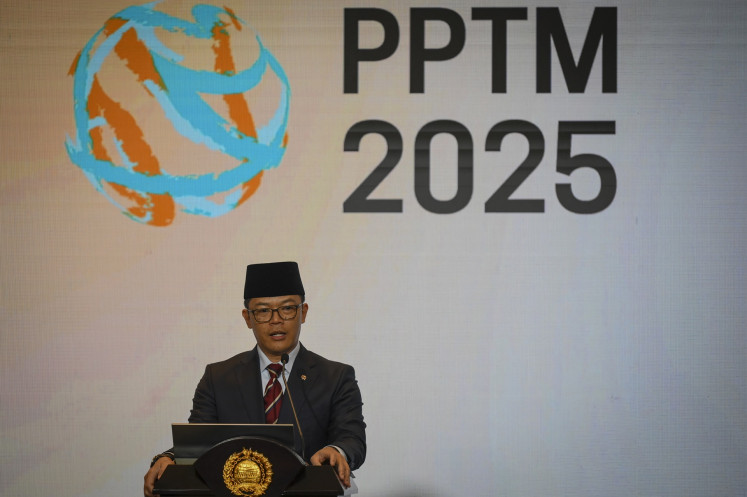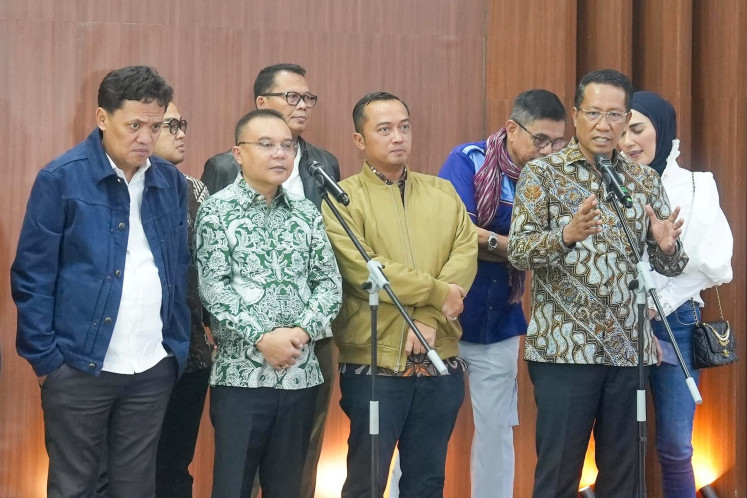Popular Reads
Top Results
Can't find what you're looking for?
View all search resultsPopular Reads
Top Results
Can't find what you're looking for?
View all search resultsThe need for global change to address climate change
World Environment Day on June 5 is an opportunity to mark time on the state of the Earth and how we live on it: in the past, present and future
Change text size
Gift Premium Articles
to Anyone
W
orld Environment Day on June 5 is an opportunity to mark time on the state of the Earth and how we live on it: in the past, present and future. Al Gore has marked time with his new book The Future: Six Drivers of Global Change.
Released in January 2013, the 558-page sweeping study by the former US vice president shows that every day is environment day for everyone.
He discusses how human activity has affected the environment and brings about global change. Indeed, Gore's discerning volume is on six major factors or drivers of global change.
In short, the six drivers are work, communications, power, demographics, biotechnology and climate change, as one reviewer in newbooksinbrief.com concisely listed.
An understanding of these drivers helps us realize if we are heading for a future that is better or worse. We head for a better world by making the right choices. We hurtle toward something worse when we make the wrong decisions or make no emphatic decision at all.
Driver 1 is work in a more globalized economy. Labor is moving from West to East. Multinational firms have shifted their operations to the East where labor, material and transportation costs are lower. Employment is on an outsourcing basis. Automation, or robosourcing to coin a new term, is also on the rise.
Driver 2 is communications. The rapid rise and reach of the Internet with greater access in developing countries makes people aware of their right to know. They also obtain the right to communicate, to be heard and be seen, through social media outlets such as Twitter and Facebook.
Driver 3 is power. Power is shifting from the West to the East. The rise of China is a reality. Its rise heralds a new global power dynamic that places the US and China at its center.
The pair becomes an exclusive group, the G2. Governments also acknowledge the pervasive influential role multinational corporations play in the world economy and the existence of rogue players, both radical and terror groups.
Driver 4 is demographics. People move on a mass scale. It is not just professionals and displaced people seeking a new life. With additional disposable income, people travel to see the world.
In 2012, about 83 million Chinese traveled overseas, spending US$102 billion, according to the World Tourism Organization. Indonesia also sees a rise in its middle class with more people traveling by air.
In 2012, the country had more than 72 million air travelers, up by nearly 15 percent from 2011, according to the Transportation Ministry.
Driver 5 is biotechnology. Researchers produce new organisms, new materials and new kinds of fuel through genetic engineering.
Driver 6 is climate change. The burning of fossil fuels (particularly oil and coal) and land degradation, both of which release carbon dioxide, build up concentrations of CO2 and other greenhouse gases in the atmosphere and trap heat. With 90 million tons of CO2 and other gases dumped every day, this build up leads to a rise in the planet's temperature.
Gore asserts 'the single most important and threatening consequence of this collision (of industry with the earth) is the climate crisis.' He argues that 'solving the climate crisis requires reducing emissions not by a little, but by a lot.
We have to begin reducing net additions of greenhouse gases by at least 80 to 90 percent ' not 50 percent ' in order to ensure that overall concentrations do not exceed a potential tipping point before starting to decline'.
Gore notes the dangers and possible solutions in each driver. In the climate crisis, the danger is effects like extreme weather patterns, hurting efforts in sustainable development and protecting the Earth's resources for future generations to enjoy.
The solution is for governments to take the lead to reduce carbon emissions. One measure is to put a price on carbon. The government can tax carbon emitters. Put in place a cap and trade system that makes polluters reduce emissions. On the other hand, the government can grant subsidies to boost renewable energy like solar and wind power. Cancel subsidies for oil, gas and coal companies.
Gore views the world's fossil fuel corporations as the single block against these measures. These firms have combined assets of $7 trillion and fear its loss if all the world's governments and citizens accept the global scientific consensus on the climate crisis.
Gore believes all the negative effects he analyzed can be mitigated if democratic governments can limit the ability of corporations to influence public policies and operations.
For Indonesia, a member of the G20, its in-tray for homework is formidable. Land degradation amounts to an estimated 4 million hectares of damaged forest a year, Kompas daily reported in a May 31 front page article on the nation's challenges in 2015.
President Susilo Bambang Yudhoyono, whose second and final five-year term ends in October 2014, has declared a maximum cut of 41 percent of carbon emissions by 2020.
Even this target may not be enough after Gore's analysis. Whoever succeeds SBY will have a heavier load on his or her in-tray.
The writer teaches journalism at Dr. Soetomo Press Institute (LPDS), Jakarta.


